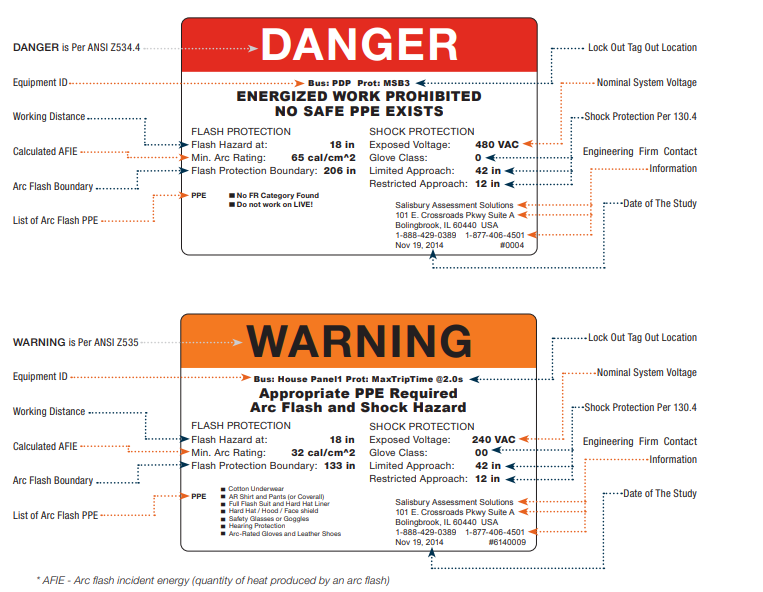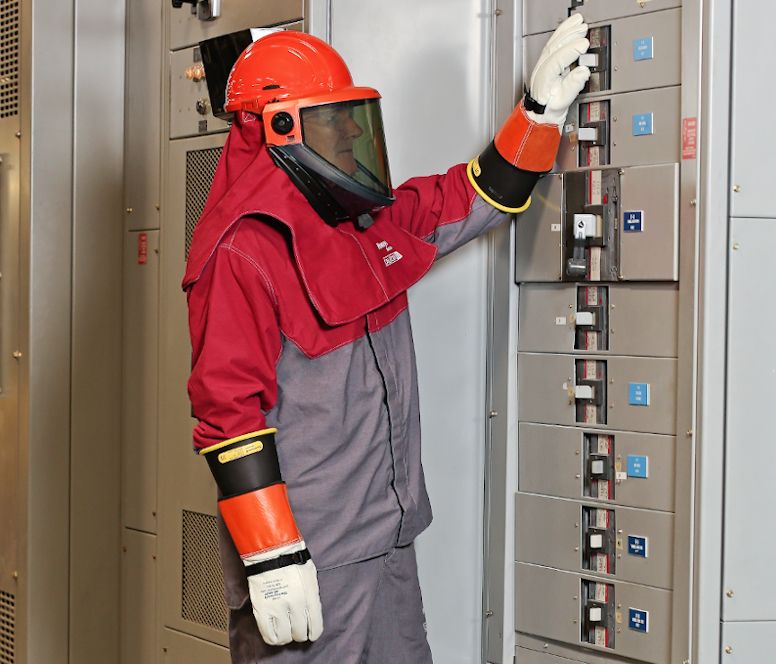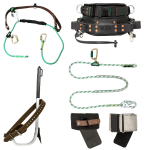Linemen, electricians, or anyone working near energized electrical equipment needs to be aware of the dangers of arc flash and what precautions they need to be taking when working near equipment that can cause an arc flash. Arc flashes can happen in both high and low-voltage environments but are most common in 480V arcs. Arc flashes are incredibly dangerous because arc flash can produce temperatures of up to 35,000 degrees Fahrenheit at the arc terminals, for reference the surface of the sun is estimated at only 9,932 degrees Fahrenheit. An arc flash is an explosion of electrical energy that can cause substantial damage, injury, and death. Analyzing arc flash hazards is critical for workplace safety. All industries have a level of risk, but some higher-risk areas are electrical, oil, gas, mining, and manufacturing companies such as food, pharmaceutical, and chemical industries.
Divergent Alliance provides arc flash suits form Salisbury by Honeywell, FR clothing by MCR safety, and insulated tools by ITL to keep linemen and electricians safe on the job.
To get a quote, give us a call at 847-531-0559 or fill out a contact form. We offer fast shipping across the United States.
What Is an Arc Flash?
An arc flash, also known as a flashover, is an electrical accident that produces a very dangerous, high-temperature explosion. An arc is when electrical current jumps through the air between two points. In everyday life, an arc happens when you touch a light switch and feel a small shock or in a higher voltage situation, an arc happens when lightning strikes. Arc flashes can happen when working with high-power electrical equipment causing an explosion of heat, light, and fire.
An Arc Flash is an electrical explosion caused by a fault condition or short circuit when either a phase to ground or phase to phase conductor is connected and current flows through the air. Arc flashes cause electrical equipment to explode, resulting in injury or fatality to workers and damage to electrical equipment.
Arc Flash VS. Arc Blast

Arc flash is the light and heat emitted from the explosion. In arc flash temperatures can reach 35,000◦F causing extreme burns. Arc flash will kill up to distances of 10 ft.
Arc blast is the pressure wave caused by the tremendous temperatures of the arc flash. An arc blast is an explosive expansion of the air and metal in the arc path. Arc blasts cause high-pressure waves, sound, and shrapnel which heated metal is expelled away from the arc at speeds exceeding 600mph.
What causes an arc flash?
An arc flash is caused when electrical arcs experience negative incremental resistance, the electrical resistance reduces as the arc temperature rises. Therefore, as the arc develops and grows hotter the resistance plummets, drawing more current until a part of the system melts, evaporates, trips, or provides enough distance to break the circuit and extinguish the arc.
Arc flash can be caused by:

- An employee makes accidental contact with electrical systems.
- Conductive dust builds up inside electrical units.
- Corrosion builds up on electrical conduit and wires.
- Tools drop onto or into electrical units.
- Improper work procedures.
How to prevent an Arc Flash
- Use warning labels to indicate arc flash hazards.
- Reduce or eliminate the amount of work done around live equipment.
- Use remote diagnostic and maintenance tools.
- Install devices to reduce energy in addition to containing energy.
- Utilizing properly designed and installed equipment for new and existing installations.
The best way to prevent an arc flash is to focus on prevention. OSHA supports the NFPA 70E recommendation that employers must perform an arc flash site assessment if they meet the following criteria:
- Electrical equipment is likely to be adjusted or maintained while energized.
- Electrical equipment exceeds 50 volts.
An arc flash risk assessment is a calculation that determines the thermal incident energy, PPE requirements, and arc flash boundaries for each hazard location. Only a Professional Engineer, or PE, can conduct this study. The engineer should have experience in electrical, power, and short circuit studies. The PE must also be familiar with NFPA 70E.
Electrical Safety in the Workplace
Any equipment that poses a risk of an arc flash must be labeled with a warning. This allows all employees working on these systems to be prepared. The most widely used standard for arc flash labeling is NFPA 70E. NFPA 70E requires an arc flash hazard analysis and risk assessment procedure to provide a safe workplace. An arc flash risk assessment, per NFPA 70E, is a study investigating a worker’s potential exposure to arc flash energy. This is conducted for injury prevention as well as confirmation of safe workplace practices. The determination of the arc flash boundaries and the appropriate levels of personal protective equipment (PPE) needed are crucial deliverables of an arc flash risk assessment.
NFPA 70E requires an update to your study every five years, or when there is a major modification to your distribution system. This also includes updating labels to the current standard.

Arc Flash PPE
When worn correctly arc flash PPE will protect the wearer from external burns to the skin, internal burns from inhaling hot gases and vaporized metal, hearing damage, eye damage from the ultraviolet light of the flash, as well as many other injuries. When energized work is justified, workers must wear the appropriate arc-rated clothing and other required PPE. Arc-rated clothing can insulate the wearer from the intense heat of an arc flash up to the arc rating. The arc rating is the amount of energy the material can block before the wearer receives a 2nd-degree burn. Linemen and electricians must ensure they are wearing clothing that has an arc rating equal to or higher than the possible incident energy.
The flames, heat, and gases released in an arc flash can cause regular work clothes to catch on fire, which dramatically increases the extent and severity of the burn injury. Arc flash suits and electrical PPE replaces regular work clothes to reduce the risk of arc flash burn injuries. Standard Arch Flash PPE gear usually comprises an arc flash suit, hood and face shield, gloves, safety glasses, earplugs, and more. All pieces must be worn to minimize the degree of injury.
Call Divergent Alliance at (847) 531-0559 or submit a contact form to get our volume pricing for Arc flash suits.
Arc Flash Categories

Arc Flash Suits from Salisbury

An arc flash suit covers almost all of the worker’s body. Arc flash suits are available in different forms, ranging from full coveralls, jackets & bib style overalls to pants and jacket combinations. Linemen and electricians can choose based on individual preference which type of arc flash suit they prefer. However, it’s required to be completely covered with PPE when working with energized or potentially energized equipment. Salisbury arc flash PPE offers a head-to-toe solution including garments, head protection, foot protection, hand protection, and accessories to use on the job.
Salisbury Pro wear plus arc flash Kits are offered in:
- Arc flash 8cal/cm2
- Arc flash 12cal/cm2
- Arc flash 20cal/cm2
- Arc flash 40cal/cm2
- Arc flash 75cal/cm2
- Arc flash 100cal/cm2
- Download catalog
Features & Benefits:
- Lighter in overall garment weight compare to previous Pro-Wear® garments
- Westex UltraSoft® fabric is durable and provides long service life

- Available individually (Coat, Bib Overalls, Pants, Coveralls, Hood, WBS Shields) or in kits
- Improved mobility through updated fit and design
Certifications:
- NFPA 70E PPE Categories 1 & 2
- ASTM F1506
- OSHA 29 CFR 1910.269
- Tested per ASTM F1959/F1959M-14e1
Arc Flash Suite Supplier – Divergent Alliance
Using the right Arc Flash Suite and PPE is important for the safety of linemen and electricians. At Divergent Alliance, we supply arc flash suits and other arc flash PPEs for linemen and electricians across the U.S. To learn more about our products, visit our Salisbury by Honeywell, MCR Safety Fire-Resistant Clothing, Insulated tools and catalog pages.
Divergent Alliance is an electrical equipment distributor that provides a wide range of lineman tools and equipment for utility workers across the United States.
For our Arc Flash PPE prices, reach out to a Divergent Alliance specialist today at 847-531-0559 or fill out a contact form. We offer fast shipping across the United States.









